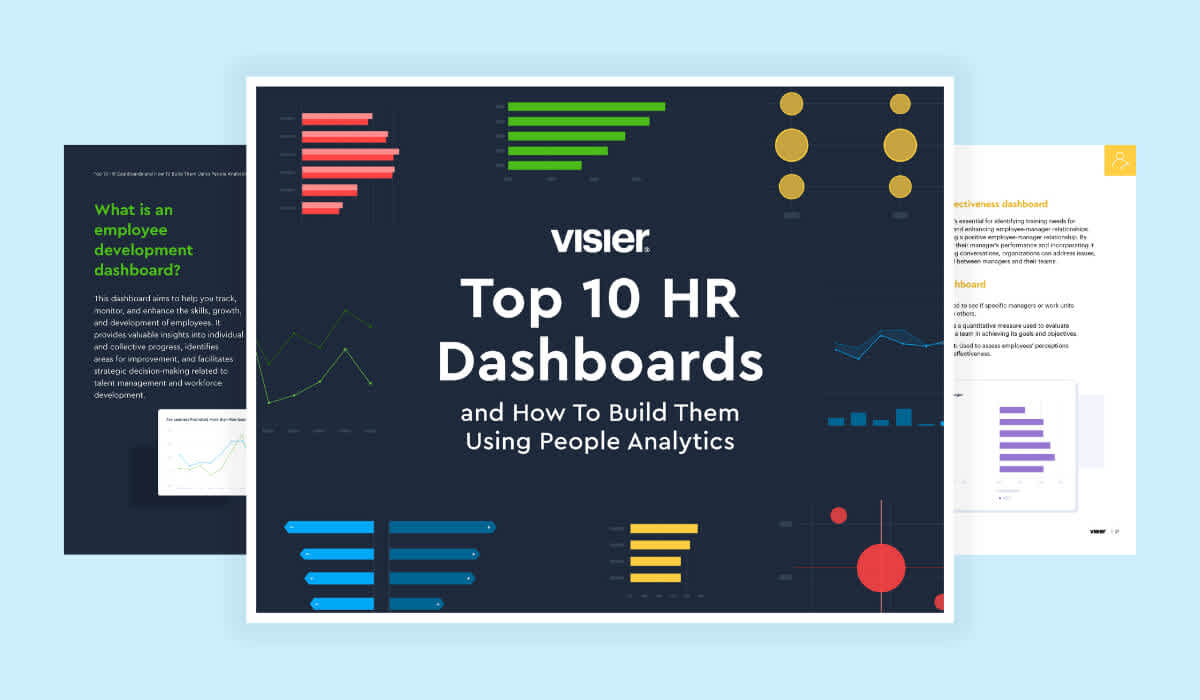15 Must-Know Succession Planning Metrics
With emerging technologies, new skills, and changing roles, succession planning is critical to keep up with the future of work. Here are the must-track metrics to know.

The business landscape is ever-changing and the only way to succeed is to prepare your company for the future. One strategy to achieve that is succession planning, a simple yet effective way of minimizing leadership and skill gaps. Succession planning metrics will help you measure the success of these initiatives so you can see how well-prepared your company is in the case of an unforeseen departure.
What is succession planning?
Succession planning is the process of identifying critical positions and skill sets within your company and preparing specific employees to take over those roles as needed. This prevents skills and leadership gaps and ensures a smooth transition when one or more employees leave the company.
Succession planning is more common for leadership positions, but it isn’t exclusive to those roles. You can also use it for positions that require specialized, hard-to-find skills, where you need to always have someone capable of doing the work.
This process is part of learning and development and talent management and can help improve engagement, satisfaction, retention, and productivity.

How do you measure the success of a succession plan?
Creating a succession plan, and identifying key positions and the right employees for the program, is the first part of the process. But how do you measure success? That comes down to a few key metrics.
The exact ones you choose will vary depending on your goals and your company. For some, engagement and retention could be priorities, while others may be more interested in performance or feedback from stakeholders.
There are, in general, two types of metrics: qualitative and quantitative.
Quantitative metrics are all about the numbers. They’re objective KPIs that can show you exactly what’s working and what isn’t.
Qualitative metrics are more subjective and include different types of feedback. They provide helpful context to understand the perspectives of all stakeholders.
15 succession planning metrics to track
Tracking the success of your succession planning programs is all about metrics. Here are the most common ones you should keep an eye on.
1. Critical positions filled internally
One of the primary goals of succession planning is to fill roles by hiring internally. You can look at the exact number or calculate the percentage of critical or management positions filled internally. There’s no exact result to strive for.
If you were at zero prior to creating a succession planning program, even a 5% increase can be a victory. But if your goal was to fill 25% of management positions internally and you only filled 15%, you can dive into analytics to find adjustments you can make.
2. Numbers of successors per critical positions
Another quantitative metric, the number of successors promoted, is a straightforward indicator of a successful succession planning program. Most like to aim for at least three people in each critical position. That gives you a safety margin in case one successor leaves or becomes unavailable because of other constraints.
3. Employee engagement
Engagement may be more on the qualitative side, but it is a critical metric to follow. Engaged employees perform better and stay with the company longer. To measure engagement, you can use surveys and other feedback mechanisms to see how employees feel about their work and the workplace, and how those feelings change over time.
4. Retention rates
Training an employee only to have them quit the company for reasons you could have avoided is a business nightmare. Lack of development and growth opportunities are often cited as primary reasons for voluntary attrition.
A well-executed succession planning program should help increase employee retention rates. Compare your retention rates before and after implementing the succession planning program.
5. Diversity and inclusion benchmarks
Diversity, equity, inclusion, and belonging (DEIB) are more important than ever. Employees are more likely to choose and stay in a workplace that prioritizes DEIB.
The scope of DEIB is not limited to hiring people from different backgrounds, genders, or ethnicities. It means giving everyone, regardless of who they are, the same opportunities. Tracking DEIB metrics against succession plans ensures every employee that meets the role and skills criteria is considered, helping to eliminate bias.
6. Productivity and performance
Succession planning aims to ensure the smooth transition of leadership roles without a negative impact on productivity or performance. Learning, development, and succession planning all lead to better productivity and performance.
To measure the success of your succession planning program, you can track productivity and performance metrics, especially of those employees involved in the program.

7. Time-to-fill
Time-to-fill is a metric most often used in relation to external hires to measure the efficacy of talent acquisition initiatives, but it can be just as useful in succession planning. It shows you how quickly a critical or leadership position is filled from the moment it was vacated. The shorter the time, the better your succession pool is, and the better your succession planning program.
8. Career path ratio
Calculate the career path ratio by dividing the total number of upward promotions in the company by all role changes. The higher the number, the more promotions exist in the company, and the more effective your succession planning efforts are.
9. Talent pipeline utilization
Selecting and training people for succession is one thing, but how well are you using these people through the different stages of training? More specifically, how many of these employees are promoted to vacant critical or leadership roles? This KPI shows how well the program is implemented within the company.
10. Bench strength
The term “bench strength” comes from basketball, where it is used to express how strong the reserve players are. In business, it refers to the company’s ability to fill critical positions internally. To find out the exact number, you’ll need to divide the number of people ready to promote by the total headcount.
11. Promotions from non-senior roles
If you only look at people in senior or management roles for succession planning, you're likely missing out on some amazing talent. Employees with a long tenure, and more junior employees who possess critical skills, should be considered in succession plans.
Like the first metric on our list—the critical positions filled internally—you can use the exact number or calculate a percentage. There’s no one fixed number to aim for, as it will depend on your workforce and your goals, though you should aim for something more than zero.

12. Average years of training required
The average years of training required is essentially the number of years before an employee will be prepared to step into a critical role. This is an important succession planning metric as it gives you an idea of the depth of your bench for each role and helps you predict who might be the strongest successor based on the scenario. For example, if you're trying to predict when a leader may retire, you can see which employees should be prepared if that leader retires in one year versus five years. When you first start this program, it is likely the number will be higher.
The goal is to see this number decrease more and more each year. This will show your training program is successful, with people gaining the necessary skills faster and faster.
13. Employee potential
An employee's potential helps you identify the right employees for succession planning and assess how well the program is working. You’ll need to analyze an employee's current abilities and potential to grow and find the best-qualified ones.
This metric has a subjective component to it, as it can incorporate feedback from employees and managers. It can help you make better decisions regarding who you include in the succession planning program.
14. Flight risk
Flight risk, sometimes called the risk of loss, determines how likely it is for a high-potential employee to leave the company in the next few months. Of course, this is not a precise number, so you can’t base succession planning entirely on it.
There are certain indicators you can look at to get a good idea, such as:
Compensation. Someone who is paid below the market is more likely to leave as soon as they find a better offer.
Big life changes. If a person recently had a big life change, especially one that could require them to relocate, you can safely assume they will leave the company if they need to.
A recent role change. A role change within the same company is often well-received. But sometimes, these changes don’t align with a person’s long-term career goals, which will make them more likely to leave.
15. Development plan completion
What is the completion success rate? To have an even better idea of the efficacy of the training, you can also look at how long it takes for them to finish it. Is it taking longer than you expected? What are the hiccups that slow down the progress?

Using people analytics and succession planning metrics
Having plans in place to develop talent for key positions in your organization is essential. As emerging technologies continue to change the way we work, succession planning can help you avoid the risks associated with not having the right people and skills in the right place at the right time.
When someone in a critical position leaves, it is imperative that you fill that position as soon as possible—with the right talent. Otherwise, performance and productivity will drop, and with them, so will the company’s revenue.
It is essential to harness all of the tools and information available to unleash the power of your workforce. By leveraging people analytics with succession planning metrics, leaders can make more informed decisions, optimize their leadership pipeline, and ensure a smoother transition of leadership roles when the time comes.
On the Outsmart blog, we write about workforce-related topics like what makes a good manager, how to reduce employee turnover, and reskilling employees. We also report on trending topics like ESG and EU CSRD requirements and preparing for a recession, and advise on HR best practices like how to create a strategic compensation strategy, metrics every CHRO should track, and connecting people data to business data. But if you really want to know the bread and butter of Visier, read our post about the benefits of people analytics.



